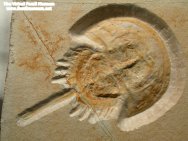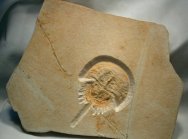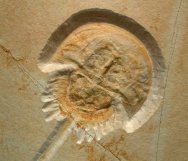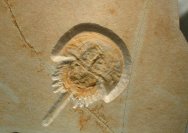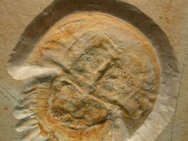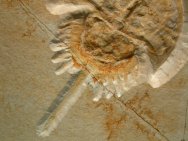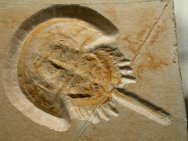Mesolimulus walchi
Phylum Arthropoda, Subphylum Chelicerata, Class Xiphosura
Geologic Time: Late Jurassic, Kimmeridgian Stage
Size: 140 mm
Fossil Site: Solnhoen Limestone, Malm Zeta 2, Eichstatt, Bavaria, Germany
While there are only three extant genera and five extant species of Class Xiphosura, they were quite diverse during the Palaeozoic Era. Because they have apparently undergone little change, the extant horseshoe crabs are often considered to be living fossils. Horse shoe crabs have a large shield that covers the cephalothorax, and the carapace is hinged between the cephalothorax and abdomen. The sturdy exoskeleton comprises three parts, the large semicircular cephalothorax, the opisthosoma which is the posterior portion of body behind the cephalothorax, and a long tail spine or telson. The resemblance to trilobites is apparent, and, in fact, the Xiphosura are considered by many to be the closest living relatives of the long-extinct trilobites. Also
see: Solnhofen Fossils |
